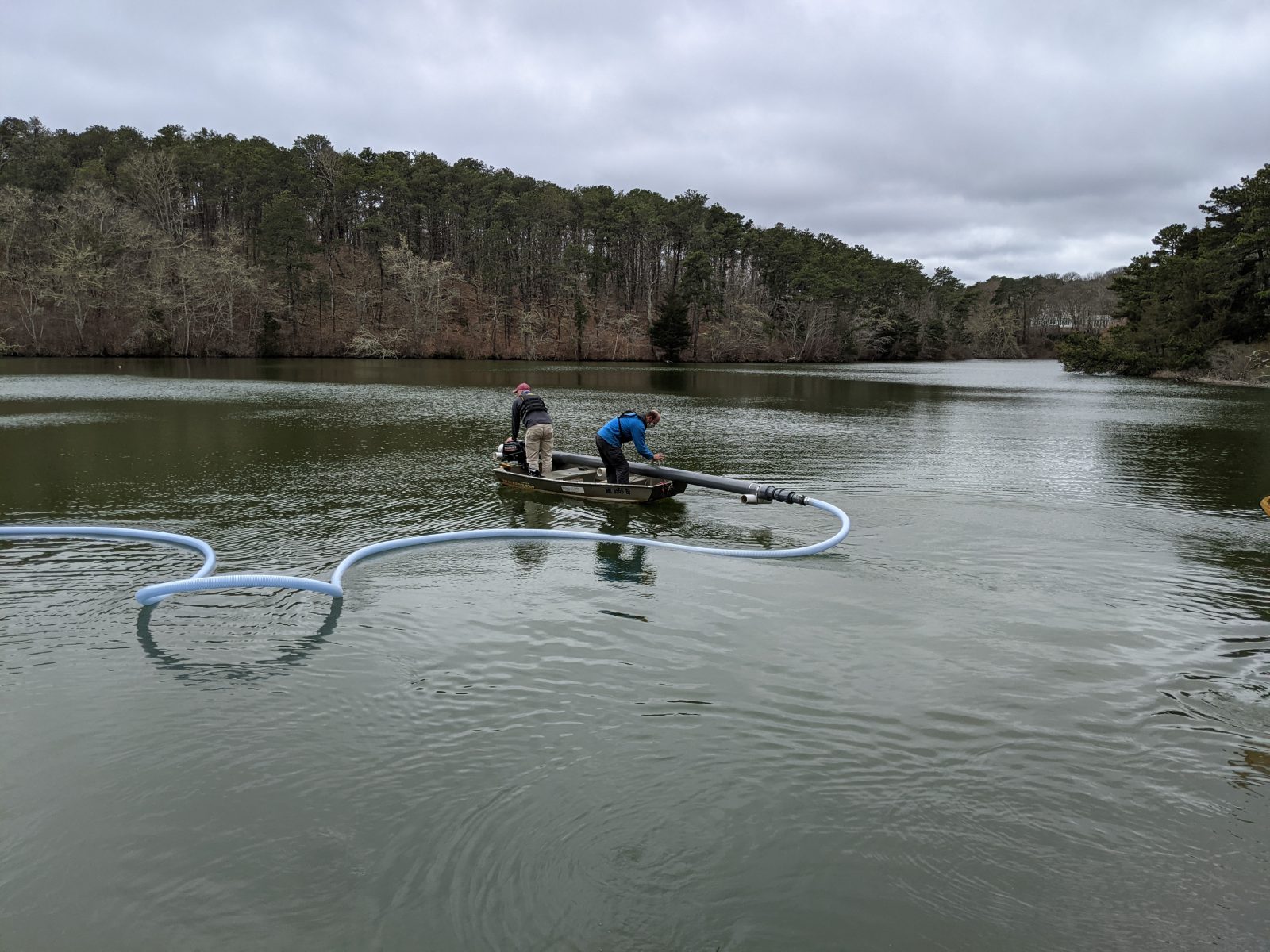
How Oxygen Saturation Technology Can Benefit Your Waterbody
Oxygen is crucial for healthy lakes and ponds, but it isn’t always easy to come by. The weather, temperature, depth, waterbody function, and many other factors can impact oxygen levels. That’s why a variety of tools, including fountains, submersed aerators, and nanobubbles, are available to supplement oxygen and balance water quality conditions. Now, we are excited to introduce the new premium water quality management solution: Oxygen Saturation Technology (OST).
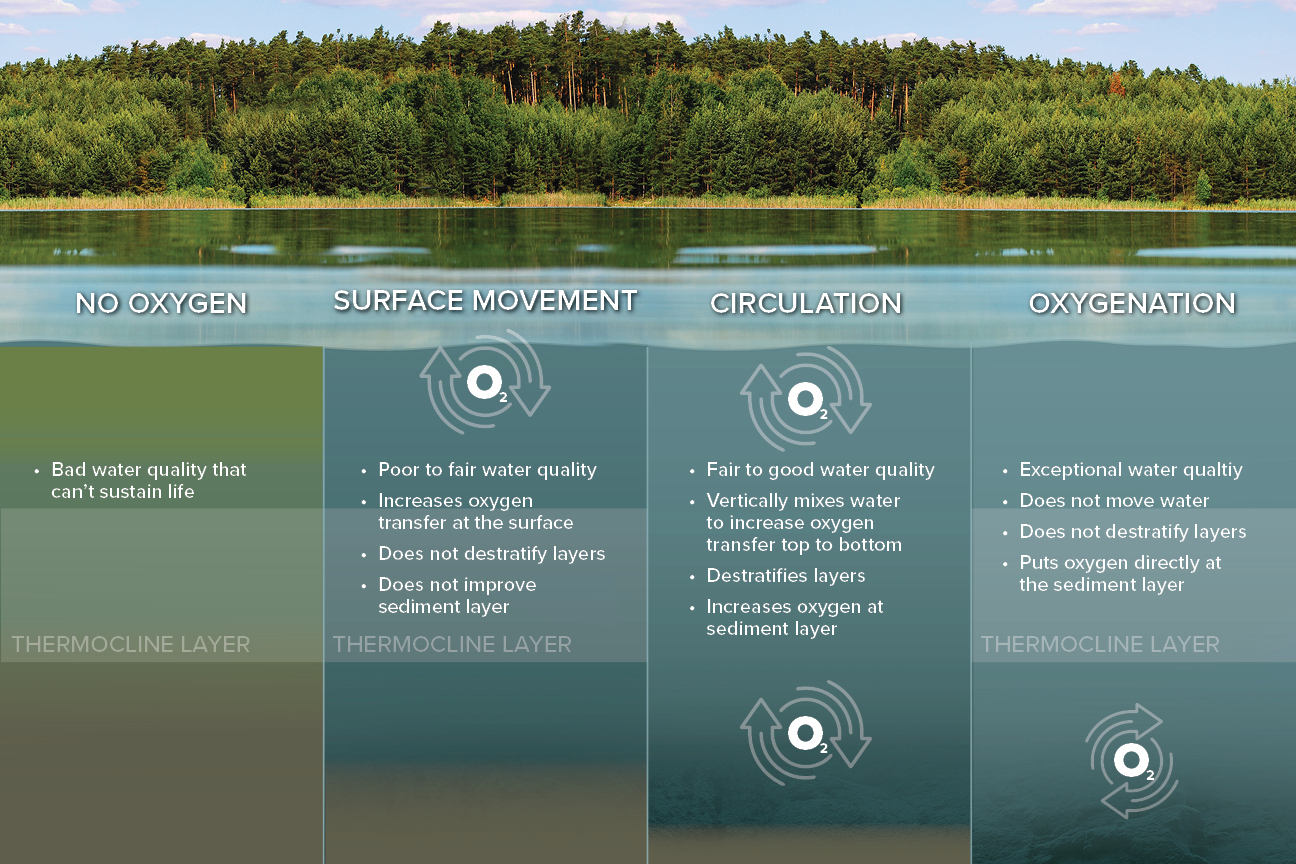
Our Toolbox of Oxygen Solutions
Oxygen Saturation Technology is a significantly different tool than conventional aeration solutions. Floating fountains, for instance, introduce oxygen to lakes and ponds by spraying water into the air. Direct oxygen transfer occurs when it falls forcefully onto the surface. Likewise, submersed aerators, which are placed at the bottom of a waterbody, release air bubbles that disperse oxygen and provide circulation as they rise. And nanobubbles pump oxygen through an on-shore system into the water in the form of microscopic bubbles that are too small to rise to the surface. As a result, beneficial oxygen is diffused throughout the waterbody until it eventually deteriorates.
These solutions have their limitations though. Fountains are less effective in deeper waters. Submersed aerators must be operated continuously for stable results. And while nanobubbles inject air directly into the water column using on-shore equipment, they are unable to target specific areas that require isolated care. That’s not to say these aeration solutions are not effective. They are excellent tools in the many circumstances that warrant them and, in fact, they can be combined with OST depending on management goals and budget.
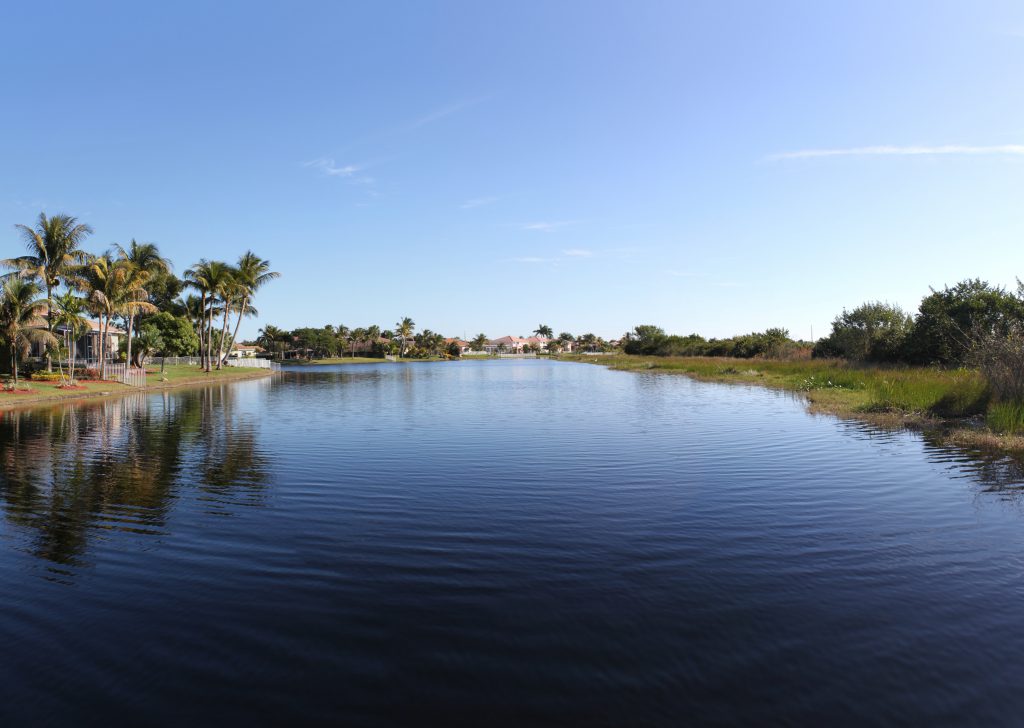
Dissolved oxygen and circulation provide many benefits in lakes and ponds:
- Create balanced water quality
- Discourage conditions that cause algae growth
- Remove cyanotoxins from water column
- Promote growth of desirable bacteria
- Support healthy microbes and zooplankton
- Prevent buildup of bottom muck
- Limit mosquito habitat
- Reduce the chance of fish kills
- Attract beneficial native wildlife
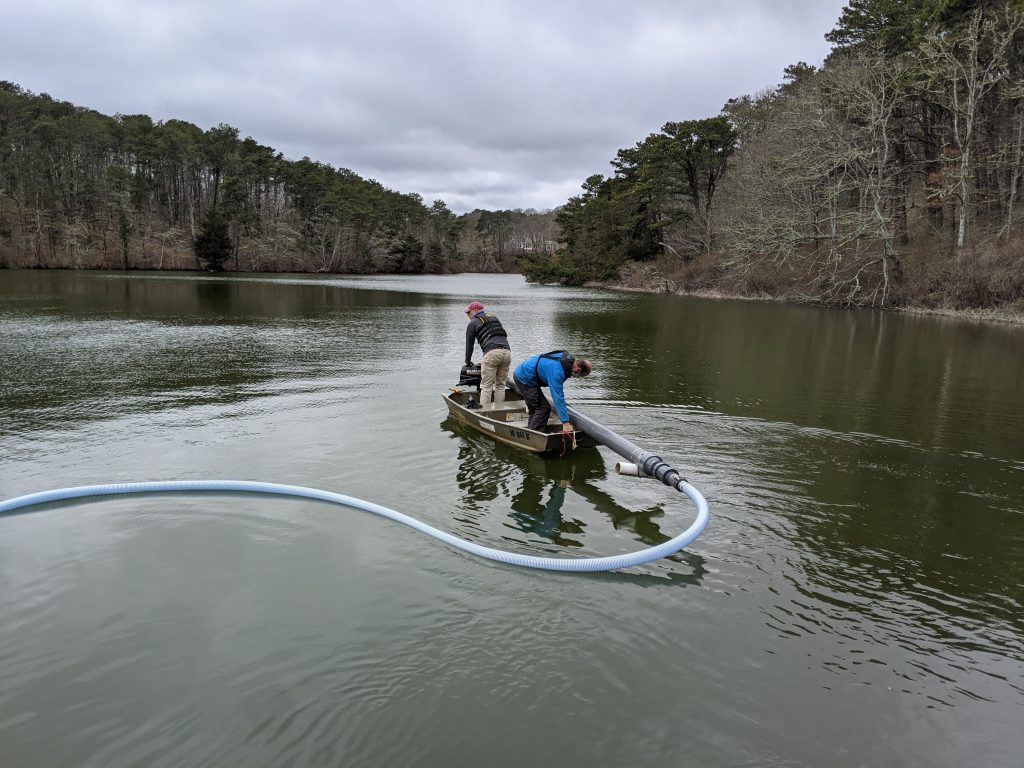
Why Oxygen Saturation Technology Is Different
Oxygen Saturation Technology targets lake anoxia (oxygen-deficient) and water quality problems at the source – the sediment. Rather than mixing throughout the water column, oxygen is completely integrated and absorbed using a patent-pending oxygen injection system. OST systems are equipped with suction and discharge lines that pull water into an onshore chamber. Inside, oxygen is injected at low pressure to fully dissolve and incorporate it into the water. The enriched water is then dispersed across and into the bottom sediments.
This groundbreaking technology is capable of infusing five to ten times the amount of dissolved oxygen compared to traditional aeration systems at specified depths to create desired water chemistry. There are no bubbles created, so the oxygenated water stays at the applied density layer, spreading across that gradient without altering thermal stratification.
Bathymetric mapping and water quality tests are usually conducted to identify areas with anoxic conditions and determine system placement, which is often at the bottom of the waterbody. Oxygenating the bottom allows for naturally occurring aerobic bacteria and microbes to break down organic pollutants and utilize excess nutrients that may otherwise fuel invasive weeds and noxious algal blooms. With OST, it is possible to remove all organic muck build-up and reduce reliance on chemicals.
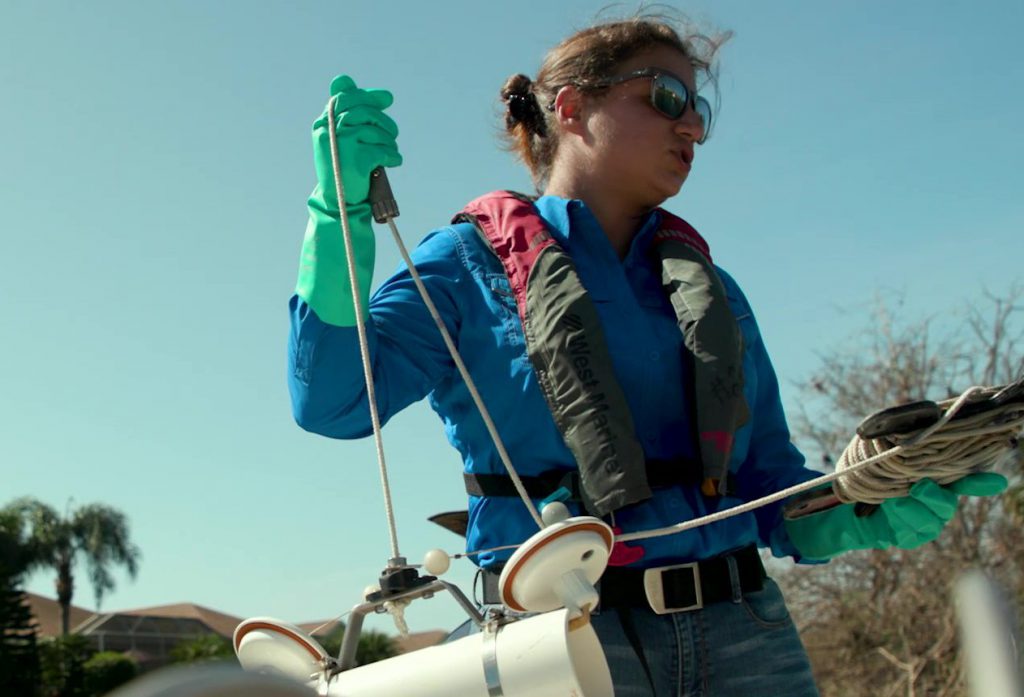
Integrated Management Is Key to Long-Term Success
Oxygen Saturation Technology is a premium water quality management tool, but it is just one part of the equation. All waterbodies are unique and require a management approach that is completely customized to the unique problems and characteristics of the aquatic ecosystem. Ultimately, a combination of many tools and techniques is necessary to achieve lasting success. As part of SOL Pro Annual Management program, lake and pond professionals can design a tailored plan to meet your waterbody goals while maximizing your budget over time.









